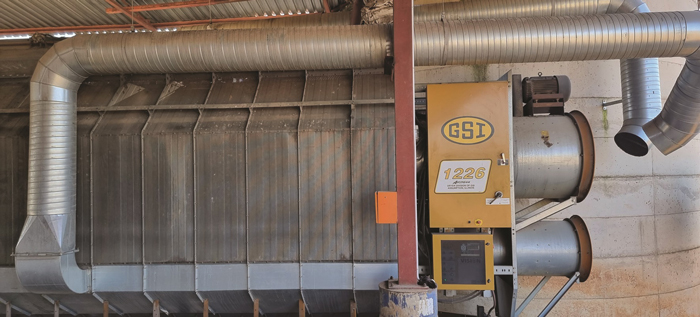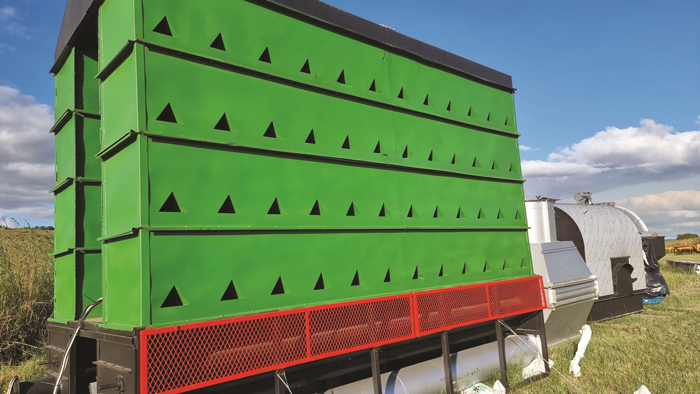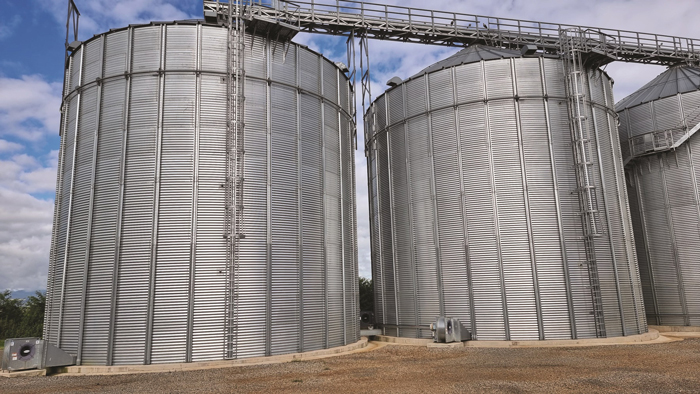
SA Graan/Grain
redaksiespan
It may seem strange to artificially dry a crop that normally dries in the field, but the benefits to the practice – such as reduced crop loss, more efficient use of harvesting equipment and a possible price advantage – make it worthwhile to dry soybeans in a dryer.
Time (and location) is key
In South Africa the drying of soybeans is not as common a practice as in other soybean production countries of the world. Ralf Küsel, member of the Grain SA Board, says South Africa’s climatic conditions during the soybean harvesting period are unique in that there is very high moisture content at night and in the early morning, increasing the moisture of the soybeans in the field. This situation limits the time available to harvest the soybeans to a few hours a day.
The constant change from wet to dry can cause the pods to burst open from the extreme midday heat which will lead to crop losses. ‘This is where the advantage of having a dryer comes in. You can harvest early in the morning and limit crop loss,’ he explains.

With the biggest volume of harvesting taking place between April and June which is a drier season in the summer production areas, these areas require four to five sunny days for soybeans to dry effectively on the field. This is probably why there is not much appetite for dryers in the main production areas. In KwaZulu-Natal high humidity complicates the drying process. This may be why an increasing number of producers in this province, where high humidity prevails, are investing in on-farm drying capacity.
Geographical location is therefore one of the biggest factors determining whether or not it would be beneficial to invest in an on-farm dryer. For Küsel, who farms in the Paulpietersburg district of northern Natal, the decision to set up a dryer in 2009 was an easy choice. ‘The area in which you farm will quickly help you make the decision whether or not to dry your crops.’ In areas with high humidity, it is a good investment, but in a dry climate, aerated silos will be sufficient if the soybeans are not dried on field. ‘It is a big capital expenditure, so if it is not for every season, it will not be worth it.’

Changing from diesel to coal
Küsel is a member of the Sunflower and Soybean Working Group. His experience lies in two methods of drying soybeans – atmospheric air in a drying facility (silo) or adding heat for the drying process. After taking the cost of electricity into consideration, the decision to convert to heat was easy. ‘It is much cheaper to burn coal than to run the electricity for three weeks to get soybeans to the same dry level.’
He initially used diesel for the burning process, but has now acquired a new dryer that burns coal for heat. With coal the heat generated is not as high as with diesel, so it works better for soybeans. The decision to convert to coal as a source of heat instead of diesel was taken from a cost management point of view. ‘Using coal for drying is a huge saving – it works out to one fifth of the price of diesel,’ Küsel says.
The dryer Küsel now uses, has a system which determines the speed at which the seeds go through the dryer. It monitors the moisture level and regulates itself accordingly. ‘The higher the moisture level in the soybeans, the slower the drying process will be,’ he explains. ‘The drying process using heat is a very quick method of drying. You put it in at the top and it comes out dry at the bottom.’
Because soybeans contain oil and protein, the temperature should preferably not exceed 70 °C. Soybeans require a moderate heat to dry effectively. This differs from maize where higher temperatures are very effective in the drying process. ‘Any drying process is more effective with higher temperatures, but with soybeans the temperature is restricted to 70 °C, to prevent damage to the protein and the oil quality,’ Küsel explains. The coal heats the water and the water blows air into the radiator. This method can dry between 10 to 15 tons per hour. ‘The big dryers can dry up to 100 tons per hour!’
In a silo where atmospheric air is used for drying, the process can take up to two weeks depending on the atmospheric conditions and moisture content of the crops. In cooler, wet conditions it can even take longer. ‘With coal you cannot reach the higher temperature needed for maize, so I will still need to use the smaller diesel burner to add the extra heat which coal can’t generate when drying my maize.’




























